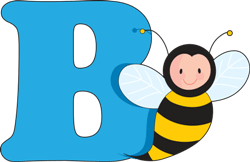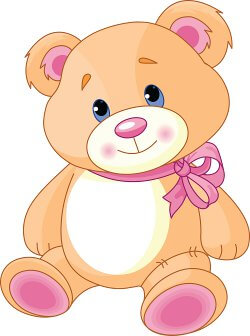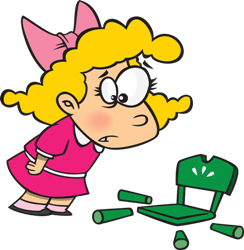The Complete List of
English Spelling Rules
Lesson 2: Homophones
In this series of lessons, you will learn useful spelling rules in English.
Lesson 2 talks about homophones.

Download a free worksheet + answer key.
Homophones are words that are spelled differently and have different meanings, but are pronounced in the same way.
We can see a good example in the picture above. The name of the letter b sounds the same as the insect called a bee.
There are many examples of homophones in English, and you will find more of them as you continue to study. In this lesson, we will look at some common examples.

Click Here for Step-by-Step Rules, Stories and Exercises to Practice All English Tenses
For example, this is a cute teddy bear. We pronounce this word with a long a sound.

In this picture, the man's shoulders are bare. This means there is nothing covering them. Because of the "magic" e we learned about in lesson 1, this word is also pronounced with a long a sound.
So, bear and bare are homophones. They are spelled differently and have different meanings, but are pronounced in the same way.
Here are some more common examples of homophones with the "magic" e:
| ate | eight |
| write | right |
| nose | knows |
| throne | thrown |
| site | sight |
| role | roll |
The words in the left column have a "magic" e, and the words in the right column are pronounced in the same way. But not all homophone pairs have a "magic" e in them.
For example, here are three very common words that all sound the same, but have different meanings:
- to (a preposition)
- two (the number 2)
- too (a word that means "also")

There are two men in this picture. They are very happy to see each other. They want to say hello. They will hug each other, too!
As you know, it is important to use a good dictionary to check the pronunciation and meaning of new words that you learn. You can also make your own list of homophones that you have learned.
To get started, here are some more common examples you should practice:
- cent and sent


Henry does not have another cent Everyone sent lots of letters today!
in his pocket.
- sale and sail


There is a big sale at the store. You can use a ship to sail on the ocean.
- see and sea


Some people need glasses to see. Erica loves the beach and the sea.
- new and knew


John loves his new books! No one knew what happened to the chair.
You will see many more examples as you continue to learn English. Look at the worksheet for this lesson to see many more homophone pairs.
Review
So, let's review what we have learned about homophones in English:- They are words that are spelled differently.
- They have different meanings.
- But they are pronounced the same way.
Download a free worksheet
Get Updates, Special Offers, and English Resources
Download your FREE GIFT (the first two chapters of
English Short Stories Book and Workbook)
as soon as you join!

By submitting your email, you consent to receiving updates and newsletters from us and to the sharing of your personal data with third parties for the purposes of sending you communications. We will not spam you. You can unsubscribe at any time. For more information, please see our privacy policy.





